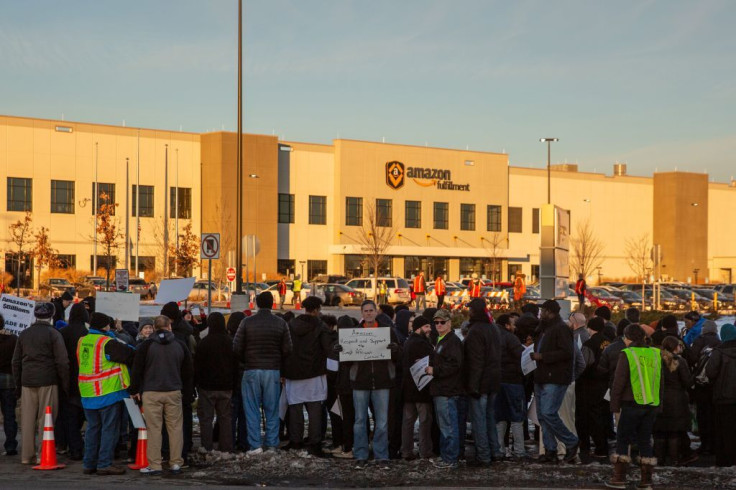Amazon Shares Drop As Expenses On One-Day Shipping Hit Q2 Earnings

Amazon CEO Jeff Bezos’ obsession with one-day delivery is costing Amazon.com Inc. a pretty penny -- and then some. The world’s largest e-commerce marketplace and cloud computing platform revealed mixed results in its second quarter earnings report, exceeding revenue expectations but falling short on profit.
Analysts said this outcome was the predictable result of Amazon’s intense focus on one-day delivery as a competitive edge against more aggressive competitors. Walmart Inc., for example, offers two-day delivery with no subscription fees.
The less than stellar earnings results, which were released after the closing bell on Wall Street Thursday, saw Amazon’s shares drop 2.6 percent to $1,923.00 in afterhours trading. Amazon stock opened at $2,001.00. Amazon’s market cap stands at $971.8 billion.
The buck behind Amazon’s delivery bang was its vow to spend $800 million in Q2 improving delivery infrastructure and warehouse facilities as part of its amabitious plan to make one-day shipping the norm for members of Amazon Prime. Amazon is also investing heavily in electric vehicle and self-driving car companies to boost its one-day delivery campaign.
“Customers are responding to Prime’s move to one-day delivery -- we’ve received a lot of positive feedback and seen accelerating sales growth,” said Bezos.
Some Wall Street analysts see that shorter delivery times as leading to more frequent purchases and higher revenue for Amazon. A growing number of Amazon employees, however, see the move towards one-day delivery as bad for their health and paychecks.
Employees at an Amazon fulfillment center in Minnesota staged protests at the start of Prime Day to protest one-day delivery, among other issues.
The pace of one-day delivery will quicken in the upcoming and hectic winter holiday shopping season with employee protests seen as likely in this busy period. Analysts concur Amazon will spend more in Q3 to push one-day delivery due to its success in Q2 despite the small hit to earnings.
Amazon’s Q2 EPS came to $5.22 compared to the $5.57 expected by analysts surveyed by Refinitiv. Revenue stood at $63.4 billion vs. $62.5 billion, according to Refinitiv. Net income came in at $2.6 billion in Q2 compared to analysts’ expectations of $2.8 billion.
Amazon’s actual revenue was 20 percent higher year-on-year. It was also markedly better than Q1’s 16.8 percent growth, which was the slowest in four years.
Revenue from seller services rose 23 percent to $12.0 billion in Q2, while advertising and other sales jumped 37 percent to $3.0 billion.

The star of Amazon’s Q2 earning report remained Amazon Web Services (AWS) despite falling short of analysts’ expectations. AWS posted $8.38 billion in revenue while analysts surveyed by FactSet had expected $8.5 billion.
AWS reported a 37 percent expansion of its cloud business, which was below analysts’ estimates. AWS’ growth, however, compares to the 41 percent growth in in Q2 2018. This second quarter’s growth was the first sub-40% growth rate since Amazon disclosed this metric five years ago.
For Q3, Amazon expects operating profit ranging from $2.1 billion and $3.1 billion versus $3.7 billion year-on-year. Analysts were expecting $4.4 billion, according to FactSet.
© Copyright IBTimes 2024. All rights reserved.





















